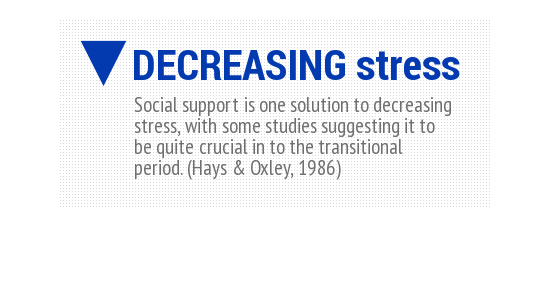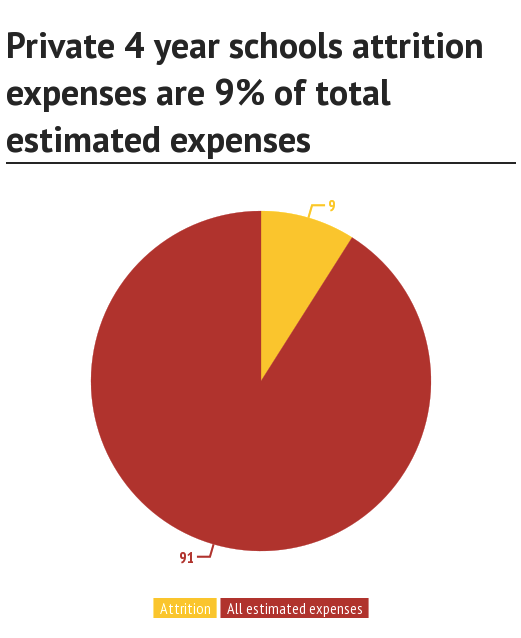
The Contributors to, and Outcomes of, Student Disengagement
******STUDENT ENGAGEMENT SURVEY!*****
I have to take this opportunity to plug a study we are running here at OOHLALA that measures student engagement! If you are currently a student, please click on the link below before May 1, 2014, and take our survey. Participants who complete it will be entered in a lottery to potentially win an iPad Mini or a Starbucks gift card!
www.surveymonkey.com/s/Z6QJN53
We've all been disengaged at some point or another in either our job, our schooling, a relationship, you name it. What is the result of being disengaged? Usually this means we stop caring. We don't try. Sometimes, we give up.
A student who is disengaged has a low sense of belonging to their school, which can lead to a number of unsavory results, like dropping out. It turns out that alienation and stress play an important role in this relationship as well. How so? Let's look into these constructs in more detail to see how they can lead to disengagement and student dropout.
1. Alienation
Social isolation (or alienation) has a significant role in whether or not a student will be engaged in their academic pursuits, and therefore, how likely the student is to stay in school1. Social isolation is typically represented in students who do not have same-sex friends and tend not to get along with their peers2. The level to which a student is socially integrated could impact not only student performance, but also their tendency toward threat-making, and even violence3.
While social isolation is not commonly reported (4% of students report feeling like they don't fit in; 9% report having some difficulty making same-sex friends2), it is definitely a concern when considering school safety. Because social isolation has been linked to violence and threat-making, we must pay more attention to student social health. The problem of alienation is highlighted in this study (done in 1992), in which 14% of US college students reported being threatened with a weapon, and 12.8% reported threats without a weapon, 5.1% were injured with a weapon, and 12.8% were injured without a weapon4. Given the recent outbreaks of school violence in the past 5 years alone, it is likely that these numbers have significantly risen.
Of course, not every case of alienation will necessarily lead to violence. Consider short-term situations of isolation, which occurs for many first-year college students (particularly international students) who have difficulty adjusting to not only a new living situation, but also new friends, new peers, and a new school system. We can sympathize with these students, who tend to feel cut off from society and their peer groups, even if it is only (hopefully) a temporary occurrence.
Takeaway points: The degree to which a student is integrated with his/her peers and faculty is very important for student retention, school safety, and student engagement. Finding and using tools that can support student inclusion and interaction- be it through promoting academic or non-academic activities, networking, and communicating- could make a huge difference for both the student and the institution. At OOHLALA we try to address issues of social alienation by providing a mobile platform through which students can connect to their campus community even before their arrival on campus, or immediately after student orientation. The campus wall, student directory (and other features), allow students to reach out, collaborate, and engage with each other throughout their college life.
2. Stress & Anxiety
The transitional nature of going to college can make students pursuing higher education even more prone to stress than any other group of students, especially when examining the stressors encountered by first year students5 (as mentioned above).

What is so stressful about higher education? Unsurprisingly, college students are stressed out about receiving and maintaining high grades, obtaining a degree, working around ambiguous class assignments 6, their relationships with faculty member, as well as the time constraints of completing class work7.
Because stress is a main contributor to student disengagement, there needs to be emphasis on the emotional aspects that contribute to attrition. In fact, research suggests emotional factors to be a highly important predictor of first year student retention8, and students who are less anxious9 and are socially and mentally healthy have a greater chance of succeeding in their higher education career overall10.

Takeaway points: The more we do to integrate social elements into a students' school life, the more likely that student will make it through the rough transition of freshman year, which increases the likelihood of that student staying in school. Studying at a college/university means students will suffer from increased stress levels, and this is highly linked to student dropout. With the encouragement of student social health through the development of both interpersonal peer relationship and extra-curricular activity participation, an increase in academic outcomes (GPA) and student retention will occur. By providing innovative tools that improve self-regulation and time management skills, OOHLALA diminishes stress by keeping students organized with our powerful schedule that utilizes smart algorithms. The app is literally helping students wake up for class, guiding them to their lecture halls (via GPS), and reminding them of their upcoming assignments, to-do's, and events. With technology helping students remove the stress and effort of planning, students have more time to focus on studying and participating in campus activities.
We can see how disengagement can affect a student- but how does it impact the school?
3. Institutional Costs
Any student that leaves a college or university is also leaving behind financial costs for that institution. Institutions depend on alumni contribution, academic fees, and projected tuition incomes that will not be realized once the student has dropped out11.


Takeaway points: Student dropout is costly, which is why institutions are always looking for ways to promote student retention, and therefore, student engagement. Institutions who are seeking approaches to keeping their students engaged are looking for tools that relate to the students, are easy to use, and are designed to support student social health through peer connections and campus involvement.
Since we had spent time in previous posts looking at the positive outcomes of engaged students, it seemed important to also look at the outcomes of a student who is not engaged. We can see that student emotional factors, like alienation and stress, can greatly influence engaged a student will be, and that institutions suffer financially when students become disengaged and drop out. We can encourage student engagement by offering more social support tools and programs that are geared toward social inclusion, while also recognizing the emotional and mental health needs of those around us.
References.
1. Tinto, V. (1987). Leaving college: Rethinking the causes and cures of student attrition.
2. DeLuca, S., & Rosenbaum, J. E. (2000). Are dropout decisions related to safety concerns, social isolation, and teacher disparagement?.
3. Newmann, F. M. (1981). Reducing student alienation in high schools: Implications of theory. Harvard Educational Review, 51(4), 546-564.
4. Aud, S., Wilkinson-Flicker, S., Kristapovich, P., Rathbun, A., Wang, X., and Zhang, J. (2013). The Condition of Education 2013 (NCES 2013-037). U.S. Department of Education, National Center for Education Statistics. Washington, DC. Retrieved [date] from http://nces.ed.gov/pubsearch.
5. D'Zurilla, T. J., & Sheedy, C. F. (1991). Relation between social problem-solving ability and subsequent level of psychological stress in college students.Journal of Personality and Social Psychology, 61(5), 841.
6. Kohn, J. P., & Frazer, G. H. (1986). An academic stress scale: Identification and rated importance of academic stressors. Psychological reports, 59(2), 415-426.
7. Wright, C. A. (1967). Procedural Reform: Its Limitations and Its Future.
8. Szulecka, T. K., Springett, N. R., & De Pauw, K. W. (1987). General health, psychiatric vulnerability and withdrawal from university in first-year undergraduates. British Journal of Guidance and Counselling, 15(1), 82-91.
9. Tobey, P. E. (1997). Cognitive and non-cognitive factors as predictors of retention among academically at-risk college students: A structural equation modeling approach.
10. Leafgran, F. A. (1989). Health and wellness programs. The freshman year experience, 156-167.
11. National Center for Educational Statistics, 1989

No comments:
Post a Comment